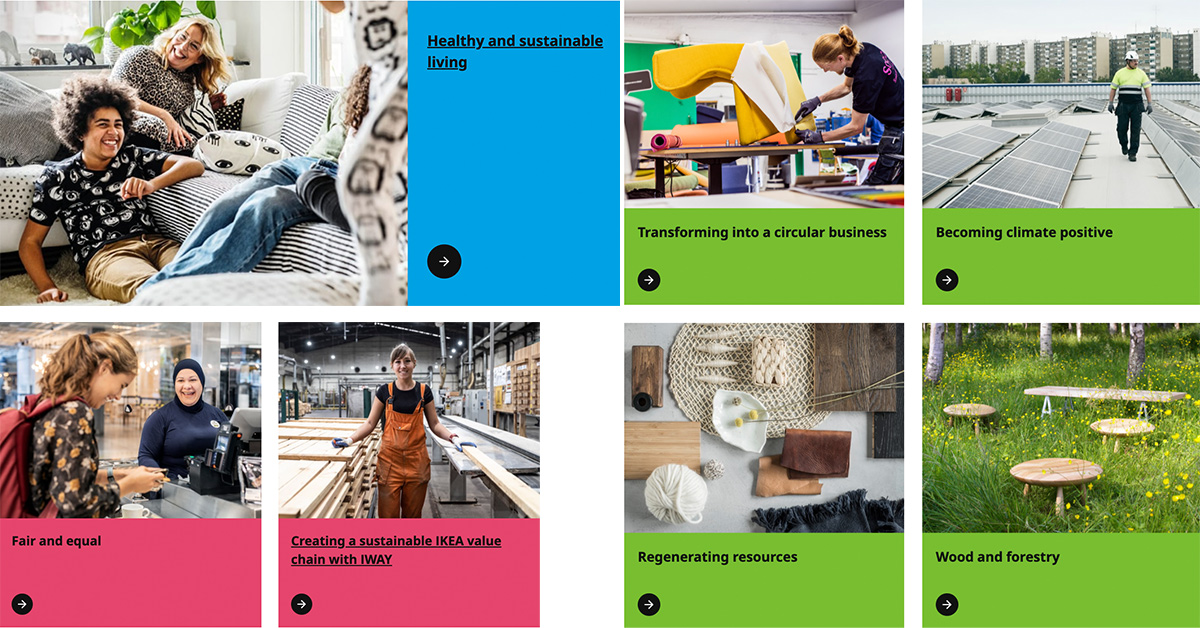Running a business has always been challenging, but the current global climate has made it even more so. Business leaders today face unprecedented pressures such as volatile markets, social-justice strife, and environmental disasters. Add in rising material costs and stretched supply chains, and it’s understandable if you’re feeling overwhelmed. However, purpose-driven leadership and sustainability initiatives can help solve your most pressing business challenges. Let’s explore five ideas for how you can lean into sustainability initiatives with the purpose to make your brand more resilient.
1. Make It Easier for People to Do What They Already Desire to Do
Consumers are eager to change their own behaviors to impact the world positively. However, they need brands to make it easier for them to do so. By making sustainability a part of your brand’s story and making it easier for customers to engage in conscious consumerism, you can create a more loyal and engaged customer base.
Hellman‘s “Make Taste, Not Waste” campaign is an excellent example of how a brand can help consumers be more sustainable, well beyond the point of purchase. The campaign aims to decrease food waste by showing people how mayo can turn leftover food into tasty flavor adventures.

Hellman’s has created a website that offers recipes and tips on how to reduce food waste. The website shows how leftover food can be used to create new and exciting dishes, such as using stale bread to make croutons or using overripe bananas to make banana bread. By offering these ideas, Hellman’s is not only helping to reduce food waste but also encouraging consumers to be more creative in the kitchen.
2. Turn Your Purpose Into Protection Amidst Backlash
As trust in government institutions declines, consumers are turning to brands to be changemakers. By taking a stand on social and environmental issues that align with your brand’s purpose, you can win over consumers who are looking for authentic stories and actions from the brands they love.
3. Empower Your Employees to Become Super-Advocates for Your Brand
Today, people want to work for companies that are doing what they say they will do. They want to work for companies that align with their values. By empowering your employees to become super-advocates for your brand, you can win inside your organization and out in the marketplace. This will lead to more loyal customers and a stronger brand reputation.
4. Turn Your ESG, Sustainability or Impact Report Into Actions to Prove
Investors and customers alike are looking for evidence that your brand is activating your sustainability initiatives and integrating them into your brand’s story, products, and experience. Simply disclosing your ESG rating is not enough; you must show that you are taking action and making a real impact.
IKEA is a prime example of a brand that has successfully integrated sustainability into its business. Its mission is to democratize design and create a positive impact on people and the planet. This involves a corporate strategy centered on better materials, production, and working practices, as well as a focus on products that help people live more sustainably. IKEA’s message is communicated through all consumer touchpoints – from the experiences in-store and online to the very essence of its business: flat-packed furniture production.

By making sustainability a core part of its business model, IKEA has made it easier for consumers to make eco-friendly choices. Its products, such as energy-efficient light bulbs and water-saving faucets, make it easy for customers to save energy and water while still enjoying high-quality products. IKEA has also implemented a take-back program for furniture, where customers can return their used furniture to the store for recycling. This program not only reduces waste but also extends the life of the furniture.
5. Turn Climate Action into a Brief for Innovation
Climate disclosure requires that businesses measure their greenhouse gas footprint against a common framework. This climate data can be proof of your commitments, informing impactful stories that reward action. By mining data for insights that enhance credibility and finding creative ways to infuse them into the stories you’re telling, you can maximize your brand’s impact and engage stakeholders to work together toward common goals.
To conclude, purpose-led sustainability initiatives can help recession-proof your brand by building resilience, minimizing risks, and identifying opportunities. By taking action and integrating sustainability into your brand’s story, products, and culture, you can create a loyal and engaged customer base and a committed and empowered workforce that will help your brand succeed in uncertain times.



